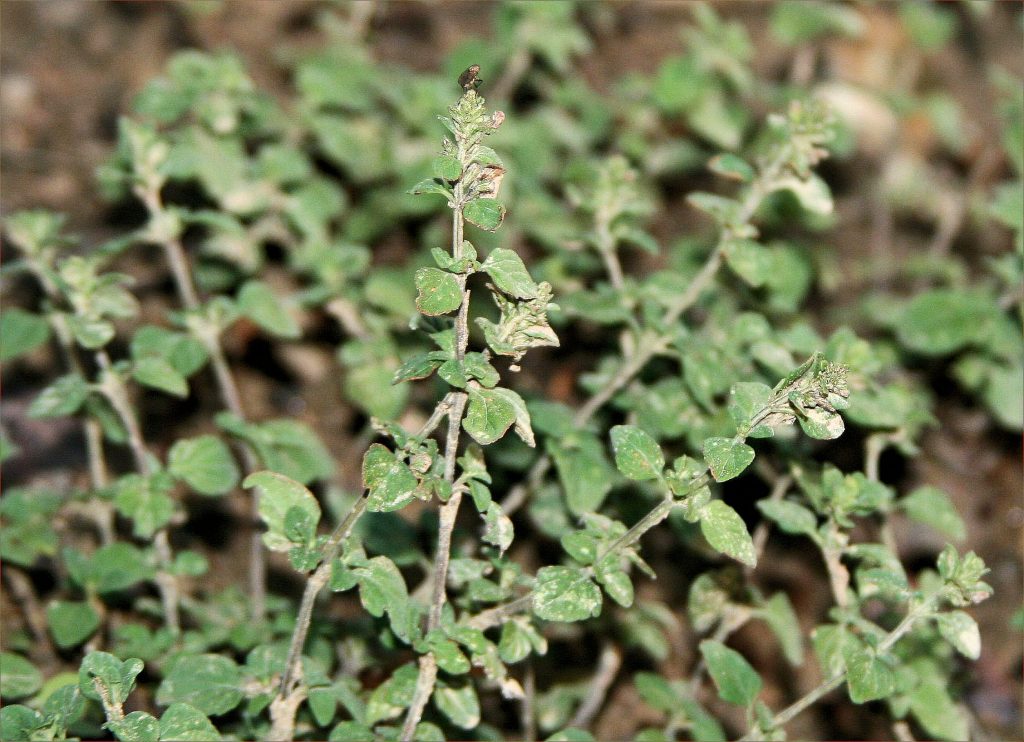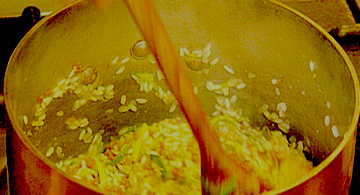
Wild thyme is known as serpillum by ancient Romans and Greeks. Pepolino or Peporino is the Tuscan term for wild thyme or serpillo. Common and regional names include Breckland thyme, creeping thyme, serpolet, peverino, timo peparello, timo selvatico, and timo serpillo.
Wild thyme is a perennial creeping evergreen shrub. It grows low to the ground spreading out its branches. Growing wild throughout Italy, the lower Alps, and dry parts of Europe, it adapts well to terrain and can be found in sandy soil, or barren rocky soil, from the plains to low mountain heights as well as along foot paths and road sides. It is widely cultivated in France, parts of Western Europe, and the UK. It makes good ground cover and is popular as a border plant since it tolerates low water and poor soil conditions, while loving exposure to the sun. It flowers from the beginning of summer through the beginning of autumn. Bees are fond of these purple flowers, so be sure to look for wild thyme honey in the autumn. Its essential oil has been used in making soap for centuries.
Traditions: Wild Thyme has been present during life’s cultural traditions. Sprigs of wild thyme, lavender, and mint were worn by young girls to bring them sweethearts. It is one of the fragrant flowers present at funerals and also planted on graves. It is thought that wild thyme was one of the herbs that formed the bed of the Virgin Mary.
In ancient Rome, the superlative efficacy of wild thyme was esteemed. This herb was given as sovereign remedy for melancholy and to remove headaches. Simply cook branches and leaves in vinegar, drain, then smear the herb paste on the temples. Generations of Italians are raised with an extension of this use. Apply thyme oil to the temples, or breathe in its aroma, as a cure for the common cold.
Snake problem? Scatter branches around, and snakes should slither away. Wild thyme was so beloved in societies centuries ago, that it was referenced by authors of plays, books, and articles.
“I know a bank where the wild thyme blows,
Where oxlips and the nodding violet grows,
Quite over-canopied with luscious woodbine,
With sweet musk-roses and with eglantine:
There sleeps Titania sometime of the night,
Lull’d in these flowers with dances and delight;
And there the snake throws her enamell’d skin,
Weed wide enough to wrap a fairy in."
~ William Shakespeare, A Midsummer Night's Dream
Francis Bacon’s Essay of Gardens written in 1625, eloquently describes gardens typical of England and Northern Europe that derived their construct from the gardens of Italy: “Of Bean-flowers I speak not, because they are field-flowers; but those which perfume the air most delightfully, not passed by as the rest, but being trodden upon and crushed, are three; that is, Burnet, Wild Thyme, and Water-Mints; therefore you are to set whole alleys of them, to have the pleasure when you walk or tread.”
Applications: Wild Thyme is an aromatic, antiseptic, stimulant, antispasmodic, diuretic, and an emmenagogue, (stimulates blood flow in the female pelvic area and uterus, and is used to cause menstruation). With only wild thyme or combined with lavender or rosemary, make an infusion, and lightly sweeten with its honey or acacia honey. This infusion is used for chest maladies, coughs, sore throats, flatulence, constipation, and other mild digestive disorders.
Culinary Uses: Wild thyme, or pepolino, is part of the local cuisine in the southern Apennine area, especially southern Emilia-Romagna and Tuscany. It is used in many vegetable soups and vegetable side dishes. It flavors lamb, rabbit, marinades for game and red meats, braised meats, and snails. It is integral to the herb blend, za’atar, prolifically used throughout the Middle East and Eastern Europe. Dry the fresh leaves, then store in a tightly-sealed glass jar and it lasts well over one year. Use Wild Thyme honey as a condiment or flavoring with cheese, in desserts and pastries, and in beverages. Blend wild thyme with mint and lavender to flavor dishes.
* This synopsis imparts valuable information that could be beneficial as part of a wellness program. Its purpose is to open the thought process to consider including herbs and spices as natural supplements in personal regimens. Briefly stating how the plant was valued and used historically in different ages and cultures, it lists some current uses. If interested in this particular plant, please extend your research via books and articles for more details and uses.
With increasing interest for including alternative therapies with standard drug therapy, research continues, so this topic evolves continuously. Please consult your wholistic and holistic practitioners, homeopaths, nutritionists, dentists, and physicians to keep yourself updated if you choose to incorporate or ingest the plant in any form for medical purposes.







